In our pages we have already written about how the Home Army almost sent Hans Frank into the afterlife. However, this was not the first attempted assassination attempt on a German dignitary by the Krakow underground. On April 20, 1943 - Hitler's birthday - the punishing arm of the Underground State almost reached Friedrich Krüger.
Friedrich Wilhelm Krüger was born in 1894 in Alsatian Strasbourg. At the turn of the 1920s and 1930s, he became involved with the Nazis, joining the NSDAP first, and then the SA and the SS. He was quickly promoted in the hierarchy and in 1935 he became the SS-Obergruppenführer.
After the German invasion of Poland, from October 4, 1939, Krüger was the senior commander of the SS and Police in the General Government. Due to his position, he had an endless list of crimes on his conscience. Therefore, it is not surprising that on the list of the goals of the Polish underground, he took the "honorable" second place - right behind the general governor himself.
Decision and tedious preparations
The decision to assassinate Krüger was made in Warsaw in the fall of 1942. The executors were to be members of the Special Combat Action Organization ("Osa-Kosa") established a few months earlier, headed by Lt. Col. Józef Szajewski "Philips". As Grzegorz Jeżowski writes in one of the chapters of the book "Krakow - Nazi Occupation 1939-1945":
The scope of tasks of "Wasps" included actions carried out in retaliation for German terror and offensive actions, aimed primarily at senior officials of the occupying apparatus. [...] Soldiers with combat experience and proven in combat were selected for the unit.
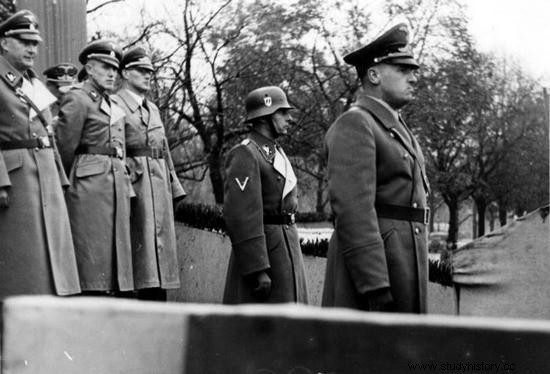
Friedrich Krüger (second from left) during the parade. In the foreground, Governor General Hans Frank (source:Bundesarchiv, lic. CC-BY-SA).
The commander of the Krakow section, codenamed "Kra w Gobelinie", was a fugitive from the Woldenberg oflag, Lieutenant Edward Madej "Felek". Moreover, the combat group included:Lt. Jerzy Kleczkowski "Jurek", Second Lt. Tadeusz K. Wojs "Stanisław", Sec. Julian Krężel "Julian" and cadets Tadeusz Battek "Góral" and Andrzej Jankowski "Jędrek". They were the ones appointed to exterminate the SS-Obergruppenführer .
Preparations for the entire operation began quite unfortunate. Here is, as Aleksander Kunicki states in his memoirs:
At the end of December 1942, a liaison officer of "Osy-Kosy" "Władka" (Aleksandra Sokalówna) sent from Warsaw brought preliminary data about Krüger and his photograph to the Krakow team. Based on this information, a more detailed investigation was started.
It turned out that our interviewer had made a serious mistake, as the data he provided, although it was really about Krüger, was different. Not the head of the SS and the police, but figures of much less rank .
The initial difficulties did not discourage the Home Army and for the next few weeks they collected - under the supervision of Kunicki who came from Warsaw - all information that could help in the implementation of the entrusted task. The hard work brought decent results.
It was quickly established that Krüger lived not, as it was initially thought, in Pałac pod Baranami, but in Wawel, and that his office was located in the seat of the "government" of the General Government, in the confiscated building of the Mining Academy.
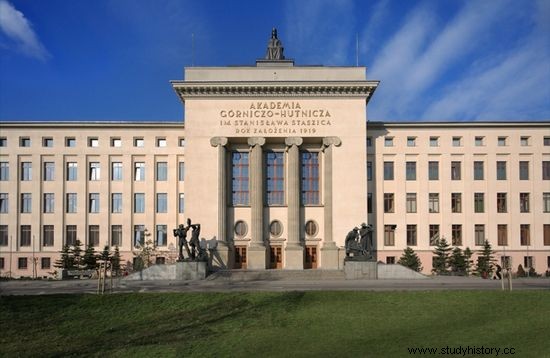
The main building of the AGH University of Science and Technology in Krakow (before the war, the Mining Academy), where the "government" of the General Government was located during the occupation
Subsequent observations revealed that his steel-gray open-top twelve-cylinder Mercedes had three alternative home-work routes. Krüger usually - when he was in the city - left the castle around ten o'clock, and returned to it at different times. Consequently, it was decided that the attack must be launched in the morning . There was still a key question:where and on what day will the strike occur?
A short hair
The very heart of the German quarter was chosen as the site of the attack. Apart from purely military matters, a certain role was also played by the willingness to show the occupant that he could not feel safe anywhere. As for the date, it was originally supposed to be April 6, but for some reason Krüger did not leave Wawel that day.
This article has more than one page. Please select another one below to continue reading.Attention! You are not on the first page of the article. If you want to read from the beginning click here.
Nervous waiting for the next opportunity lasted several days. At that time, the criminal was outside Krakow, visiting police units subordinate to him. In the end, however, he returned to the city and - as reported by the Home Army intelligence service - was to take part in the celebrations organized on the occasion of Hitler's 54th birthday. Such an opportunity should not be missed!
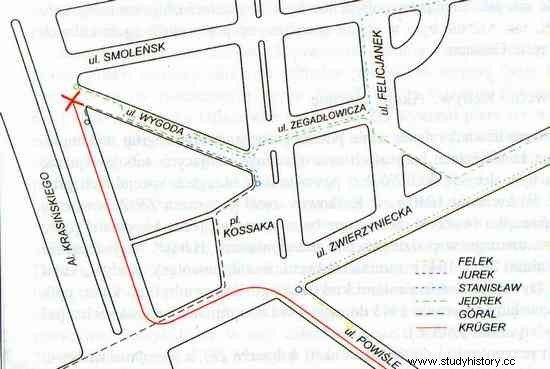
The plan to assassinate Krüger. The plan comes from the book:Andrzej Chwalba, Okupacyjny Kraków in 1939-1945, Wydawnictwo Literackie 2011
The direct perpetrators of the attack were the two youngest members of the strike group, Tadeusz Battek and Andrzej Jankowski. The rest - except for Julian Krężel, who could not leave his job - insured them. They all took up their battle stations at eight in the morning. They had to wait almost two hours for Krüger to appear. It wasn't until ten minutes before ten - when they were about to quit - the steel-gray Mercedes was spotted. Now everything happened in a flash.
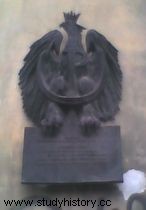
The plaque is placed on the wall of the tenement house at al. Krasińskiego 13 to commemorate the participants of the attack on Friedrich Krüger
"Jędrek" and "Góral", waiting for the criminal on Westring (Aleja Zygmunt Krasiński), threw bundles of "Filipinki" (grenades made in the Home Army workshops, brought from Warsaw in advance) to the car.
Unfortunately, they did not go where they were supposed to go. Instead of in front of the car and inside it - both exploded after being hit in the rear part of the car . Nevertheless, the force of the explosion was enormous. In the neighboring tenement houses, glass has fallen off the windows, and a large funnel has been created in the street pavement. It was 9:52 am.
Krüger was not killed, but was seriously injured. The bombers, however, did not have machine guns and were unable to finish him off, and the unit had to flee as quickly as possible. During the jump, the Wehrmacht captain blocked their way, who was liquidated by "Stanisław", and all the bombers happily reached their homes.
Unfortunately, the attack failed, but as Grzegorz Jeżowski writes:
The action was a serious warning to the occupation authorities. For the first time, the Home Army carried out an armed action against a high German official in the German Quarter , near closely guarded government buildings in the center of the "capital" of the General Government.
Further fate of Krüger and the assassins
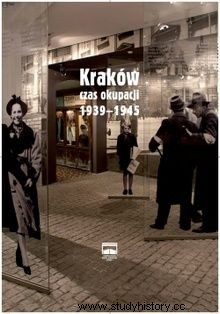
“Purpose of Friedrich Krüger. The first such action of the Home Army "is another article that we are publishing as part of our cooperation with the Historical Museum of the City of Krakow. It was created, inter alia, on the basis of the album "Krakow - occupation time 1939-1945" published by this institution in 2010
SS-Obergruppenführer after several weeks of convalescence, he returned to work and carried out his duties with even greater ferocity. In October 1943 - due to disagreements with Hans Frank - he was transferred by Himmler to another position. After the defeat of the Reich, he took his own life.
Out of five bombers, only Tadeusz Wojs "Stanisław" lived to see the end of the war. The rest died at the hands of the Germans.
Andrzej Jankowski "Jędrek" and Tadeusz Battek "Góral" fell on June 5, 1943 in the church of St. Aleksandra in Warsaw - along with many other members of "Osa-Kosy" - during the wedding of a colleague from the ward. The Gestapo men failed to break them and both were executed in the Pawiak.
A similar fate befell Edward Madej "Felek" and Jerzy Kleczkowski "Jurek". Before Christmas 1943, they were both accidentally arrested in one of the underground premises in Warsaw's Old Town and imprisoned in Pawiak. Despite the torture, the Germans did not get anything out of them and on February 10, 1944, the Home Army soldiers were shot during a public execution at ul. Barska.
We recommend:
Permanent exhibition "Cracovians in the face of terror 1939-1945-1956" in the "Ulica Pomorska" branch of the Museum of the History of the City of Krakow (2 Pomorska Street, the branch is open from Tuesday to Sunday).
